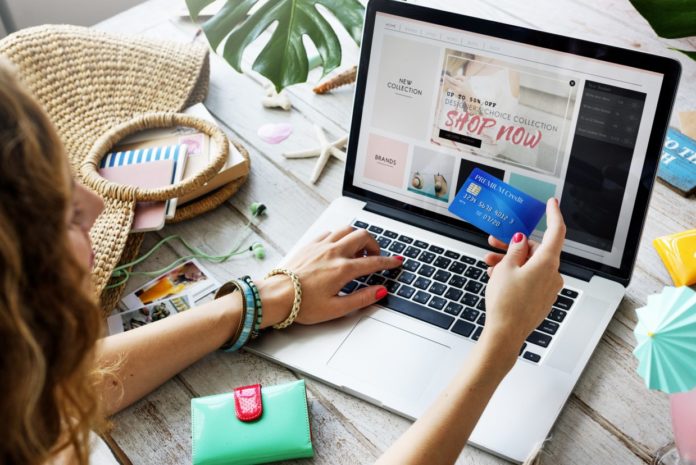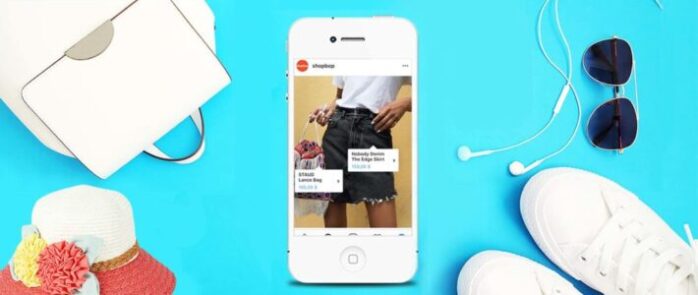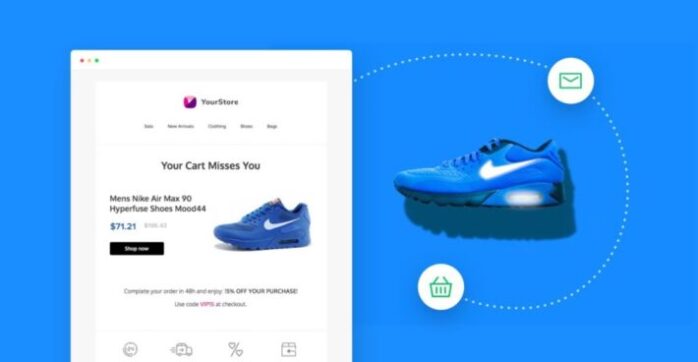
Are you one of those lucky people who decided to pursue a dream and opened an online fashion store? We hope your business is growing fast, and you face no challenges on your way to success.
But if you have faced some trouble and don’t know how to beat the competition, don’t panic. We’re here to help you! Let’s consider five brilliant marketing ideas that will take your fashion business to the next level.
1. Blogging

Famous fashion brands like Urban Outfitters, Forver21, and even luxury brands like Gucci run blogs. So if you own a fashion store, but have no blog, it’s time to fix this mistake. Start a fashion blog – and that will help you to drive more traffic to your website, raise brand awareness, and improve customer loyalty.
If you don’t know what to write on your blog, here are a few good content ideas for you:
● Shopping guides (e.g., “How to choose high heels?”)
● Lists and rankings (e.g., “Top 5 cute sweatshirts to wear this spring”)
● Interviews with fashion experts, stylists, founders of the brands (e.g., “Exclusive tips from Alex Costa: how to dress for a party”)
● Discussion of local and international fashion events (e.g., “Amazing outfits and celebrity sightings during NYFW 2024”)
● Fashion tips, tricks, and hacks (e.g., “How to transform old jeans into shorts”)
In fact, you don’t have to write for your blog. You can hire freelance writers (check out services like TopWritersReview), collaborate with fashion bloggers, or start accepting guest posts. There are many ways to source content for your blog, and you can choose the option that suits you the best.
2. Choice overload prevention

Have you ever heard about “choice overload”? If you know little or nothing about this phenomenon, here is a short explanation for you.
Choice overload or over choice occurs when a customer is exposed to too many choices. Scientific studies proved that over choice is associated with unhappiness, decision fatigue, and inability and unwillingness to make any buying decision.
It means that when shoppers visit an online fashion store and see 100 different blouses available in 10 different colors, they can choose nothing. They feel overwhelmed with such a great number of options, so they decide to leave the website instead of making a purchase.
If you offer a great variety of products on your website, be aware of the “paradox of choice”. Too many choices reduce customer value instead of increasing it. So that may negatively affect your sales. Here are two tips that may help you to boost your marketing efforts:
● Don’t display all the items you have in stock on your website. Create “seasonal offers” or add a few more categories to your site, so each category will include fewer items.
● Add more filters so your customers will be able to choose specific products instead of reviewing each and every item available on your website. For instance, if you sell blouses, add such subcategories and filters as colors, prints, styles, sizes to organize the items and create a clear navigation structure.
3. Instagram shoppable posts

A few years ago, Instagram was just a social media platform. But today, it’s much more than that – it’s one of the best marketplaces for fashion brands.
As a business owner, you can take advantage of the new features that the app provides. You can sell on Instagram using shoppable posts.
Do you have a business account on Instagram? If yes, that’s great. If no, you should create an account right now, and connect it to the catalog using the Catalogue Manager or Facebook Partner. Once everything is ready, you can publish your first shoppable story or post.
If you have never created shoppable posts and stories before, here are a few pieces of advice for you:
● Tag up to 5 products per image or up to 20 products in a carousel image post.
● Write a catchy caption. Try to engage your followers and encourage them to check the prices and visit your websites.
● Share user-generated content. Show your followers how your products look like in real life.
● Always double-check the tags. Make sure that you tagged the right product and the right color.
● If you collaborate with influencers, use their photos to create shoppable posts.
4. Shopping cart abandonment emails

Do your website visitors add items to the shopping cart but buy nothing? No worries. You are not alone with your problem. According to statistics, an average shopping cart abandonment rate for online retailers is 76%.
Here is a marketing idea that may help you to lower the shopping cart abandonment rate. Send emails with coupons, discount codes, and other deals to shoppers to convince them to proceed to checkout.
To craft an effective shopping cart abandonment email, follow these rules:
● Offer something that has value for your customers. For instance, if you sell luxury sunglasses that cost more than $10,000, offer a stylish sunglasses case, not a $15 off on the first order.
● Remind shoppers what specific item they have added to the shopping cart. Make them think again about the products they have liked.
● Make your email look catchy. Use a template that grabs attention.
● Keep your email short and concise. Make sure that nothing will distract shoppers from your “special offer”.
5. Price anchoring

Are you struggling to boost sales of the expensive items? Here is a tip for you: add a few overpriced items to your site. Yep, it’s that simple. For instance, if you want to sell dresses that cost $150, you should add one or two dresses that cost $300.
Here is how it works. There is such a thing in cognitive psychology called anchoring. Consciously and unconsciously, we tend to compare different items and choose an option that seems to be comparatively better. And that influences our buying decision-making process a lot.
When a shopper is choosing a dress, she thinks not only about which dress will fit her better but also which dress be considered as a better “investment”. After reviewing a few options, the shopper chooses “the best option she can afford without overpaying”.
For instance, if a customer is comparing two dresses that cost $115 and $150, she will choose a cheaper dress. However, if the customer is choosing between three dresses that cost $115, $150, and $300, it’s highly likely that she will buy a dress that costs $150. Why? Because of cognitive bias (anchoring), a shopper will view this option as a more valuable one and see the less expensive option as a bargain in comparison.
So how can you take advantage of price anchoring? Simply add a new pricey item to your range. The chances no one will buy this item, but it’s highly likely that sales of other products will increase.
Conclusion
The e-commerce world is full of competition. But choosing the right marketing strategy, you can make your business stand out and achieve all your goals.
So we highly suggest you revisit your marketing strategy and incorporate some new ideas. Try out the tips given in the article and find out whether they suit your online fashion store. Good luck!











